Introduction
I got into agile development during the late 90s when I read Kent Beck’s book about extreme programming (XP). It was mostly the technical aspects of XP that attracted me; I liked test driven development and continuous integration and I understood the benefit of continuously reviewing the code by doing pair programming. It took some time for me to turn my attention to what I mainly focus on today, and what I see is a cornerstone of agile, teamwork. Product development is in most cases a complex endeavor where you need a high level of collaboration and teamwork to reach required outcome. To succeed you have to make sure the participants build on each others strength and knowledge, and where they see differences as something valuable and important. But it is not certain that all working groups ends up as a true team. As a team coach you need to pay attention to building the team at the beginning. This post will describe a few tools that I have used in order to form teams.
Conditions for effective collaboration
Richard Hackman has described what you need to do to build a team in his writings, for example Leading teams. According to his research it is structural aspects that have a huge impact on how efficient and productive the team will be at the end. This is something he describes in his 60/30/10 theory, which gives you as a team coach guidance on what you should focus on and when to do it.
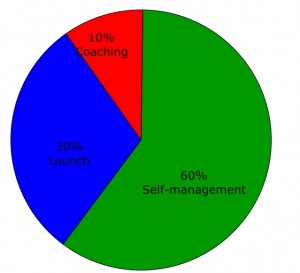 By looking at the performance of different teams, he has found that 60% of the performance differences comes from the conditions that have been implemented to foster self-management. The structures and conditions that you create for the team to act under have a huge impact on the performance of the team. One such structure is Scrum, which essentially focus on creating self-managed and self-organized teams. If you manage to establish this framework and help the team members manage themselves, you may get a very productive environment compared to if you micro-manage the team during their work. Another condition he describes is having a clear and engaging purpose for the teamwork. This is something the product owner in a scrum setting should establish and communicate; what is it that the team should deliver and what change should they the manage to create at the end.
By looking at the performance of different teams, he has found that 60% of the performance differences comes from the conditions that have been implemented to foster self-management. The structures and conditions that you create for the team to act under have a huge impact on the performance of the team. One such structure is Scrum, which essentially focus on creating self-managed and self-organized teams. If you manage to establish this framework and help the team members manage themselves, you may get a very productive environment compared to if you micro-manage the team during their work. Another condition he describes is having a clear and engaging purpose for the teamwork. This is something the product owner in a scrum setting should establish and communicate; what is it that the team should deliver and what change should they the manage to create at the end.
The second biggest source of performance difference between teams is how they are launched; 30% of the differences comes from this activity. Christopher Avery has a team orientation process that I like, and which I have used to launch teams at several occasions with good outcome. It contains the following steps:
- Clearly state the task for the team, the reason for having the team and what they are expected to deliver
- Align all members interest and motivation
- Define team agreements
- Inventory resources and honor differences
I recently facilitated a team launch using this process and once again I experienced how energized and motivated the team members got. The members where urgent to get started to work together, to improve their collaboration, and to deliver value to their stakeholders.
In this post I will describe the exercises we did as an implementation of of step 4 and partly of step 2 in the process above. The exercises I used was the market of skills and a competence matrix.
Market of Skills
The metaphor for this exercise is a market place like the one we have at Hötorget in Stockholm on Saturday mornings

Den här bilden på Hay Market (Hotorget) används med tillstånd av TripAdvisor
The market stalls are often very colorful and attractive and the seller stands inside them screaming and trying to get potential buyers to their stall. In this exercise you sell and buy knowledge and skills. The exercise has two steps: preparation and market time.
Preparation
Let the participants create their market stalls for about 30 minutes. You should encourage the participants to use their creativity to create the market place as fun and energizing as possible; the more colors or drawings the better it is. During this team launch we used big papers where the participants described the following aspects of their offerings:
- Some personal data
- What’s it that motivates you at work.
- Your main skills that you sell to the rest of the team.
- Secondary skills that you have
- Skills that you would like to buy from others
As I had seen previously this exercise normally contains the last three bullets above. I added the personal data to, well, make the descriptions a bit more personal :-). I let them describe some private information like family and where they live. I also added the motivation part to tap into each ones intrinsic motivation to work at this organization and team. This is something Christopher Avery stresses quite strongly. You should help each team member find out what’s in it for them to be part of the team; to find the deeper motivation which makes them go to work each day. By making this visible for everybody you create a foundation of collaboration and win-win relationships between the team members where they may help each other reach their desires.
The main skills are skills that you think the team will benefit from having in order to succeed with the mission. The secondary skills are skills that you have and which could be of interest to the others, but maybe are outside the teams focus and scope. The the last part contains skills that you do not have, but you think you need in order to succeed. It may also be skills that you would like to develop and improve, and you would like to find someone who could help you doing that when working on the project.
To the right you find a market place that I created as an example when describing the exercise during this session. 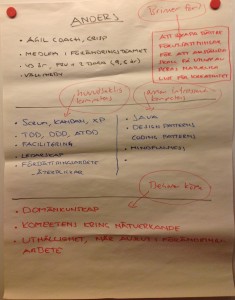
At the top right corner I have described what drives me in my work as a coach; that I love to create an environment for the employees that releases their inner lust for creativity. My mission is to set employees free from command and control to create a better work life for them. My belief is that this will also increase the delivered values from the organizations. At the middle left I have described my main skills I use and sell in my role as an agile coach. At the middle right I have described skills that may be interesting to know but which are outside of my normal focus as an agile coach at this client. At the bottom I have described a few skills that I would like to buy in order to be more efficient as a coach.
The market
When everybody has prepared their market stall you open the market place. Try to make this a bit energizing by encouraging the participants to jell out their offerings and to try to attract the others to their market stall. When the group is gathered around a stall, the seller starts to describe his or hers offerings.
The seller goes through the stall describing each part of the poster. The other participants optionally populate the poster with the following stickies:
- Any skills that the seller has forgotten to add to the poster
- Any skills that they would like to buy from the seller
- Any skills that they could sell to the stall owner.
This really creates good connections between the participants in the team since they help each other remember the strength and talents of each one of them, and to establish a culture of helping each other. The exercise make it clear each ones main contribution to the team, their talent and knowledge. Everybody sees what the others bring to the team, and what they will focus on during the work ahead. It also opens up areas that they would like to strengthen, which by knowing it, the others could help out with. Below you see one of the posters from the workshop with stickies that the other team members has put up to signal buying and selling deals with the market stall owner.
Competence Matrix
Another exercise which is good to do when forming the team is the competence matrix. During this kickoff we did it after the market of skills exercise. The two exercises complement each other very nicely, but you could use the exercises stand alone.
The competence matrix is a simple exercise used to find out if the team has all competences they need to take responsibility for the task ahead. To be completely self-managed and autonomous the team should have 100% competence coverage when transforming the backlog into deliveries. If this is not possible you need to manage the dependencies you have to people and groups outside the team. The competence matrix help you find the areas with external dependencies by looking at it when it has been created.
You also find connections between the team members where each one may mark areas that they would like to improve themselves in. Other team members may then invite those people to work together to help them develop their knowledge in new areas.
You run this exercise through three different steps:
- Design the competence matrix.
- The participants mark their competence level and interest areas inside the matrix
- Together analyze the matrix to find where they have expertise and competence gaps.
One simple and quick way of finding the competence areas is to let each one brainstorm on stickies and then let them put them up on the white board. The participants then groups the stickies together in competence areas to form the columns of the matrix.
During the second step you let the team mark in each slot in the matrix according to three different skill or interest levels:
This group extended the three levels with a new one since they had a tough time saying they were experts. They added a square symbol which meant that they had good knowledge in that area. If you find any competence gaps, have a discussion around them to agree on how to attack them, for example by extending the team with new people covering those areas, or how to manage the external dependencies in the best way moving forward.
Summary
How you form the team and launch it at the beginning has an impact on the future performance. This is something that I have experienced my selves, but it is, as I described in the introduction, also evident in research according to Hackman. Averys orientation process is a good structure which team coaches could use when launching the team. The process makes sure that you find answers to the what you are supposed to do and why you should do it, and it will align everybody to the shared goal and get consensus in how to reach it.
The market of skills and the competence matrix is good exercises to use in order to answer the who-question. You make sure everybody sees and understand the contribution and focus of each member in the team. By doing this the team members start to trust each other from the beginning; they know what the others will focus on and understand why that is important for the team in order to succeed with the mutual task. The exercises also makes it possible for the team members to find ways to help each other, to invite each other to improve and develop new skills. This will increase the motivation level, which is the most precious ingredient for success in any project or teamwork.




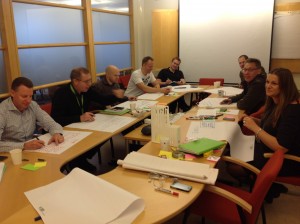
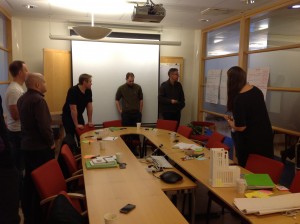
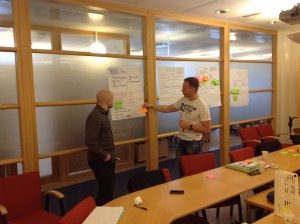
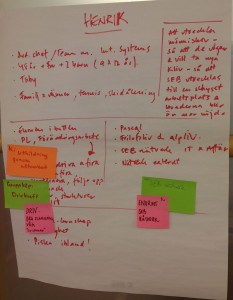
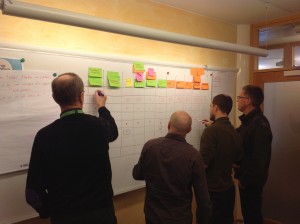
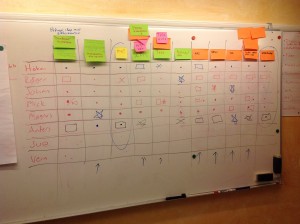
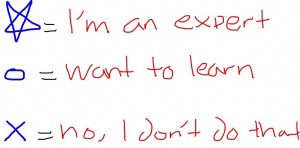
Tack Anders för denna utmärkta genomgång av dessa övningar. Precis vad jag behövde idag.